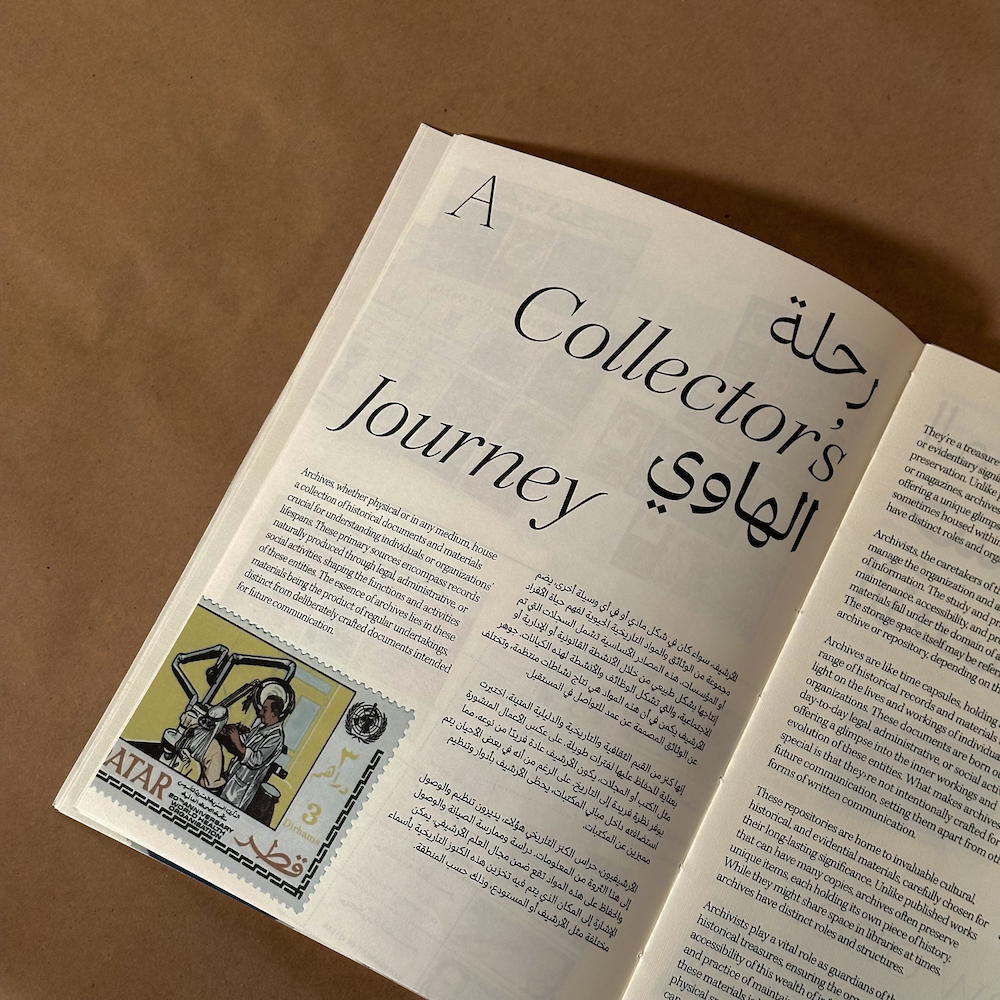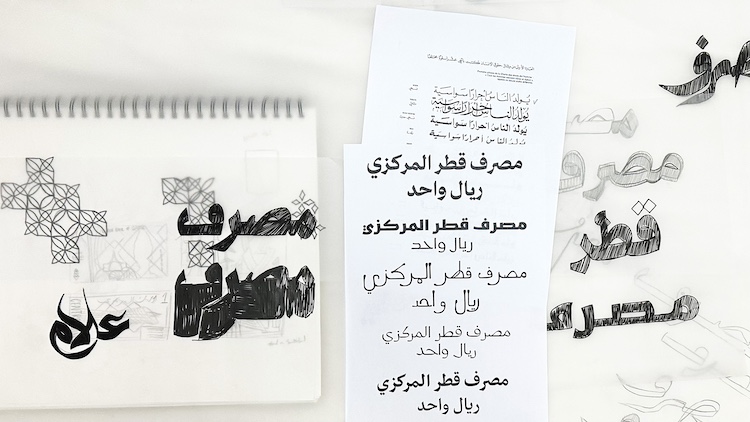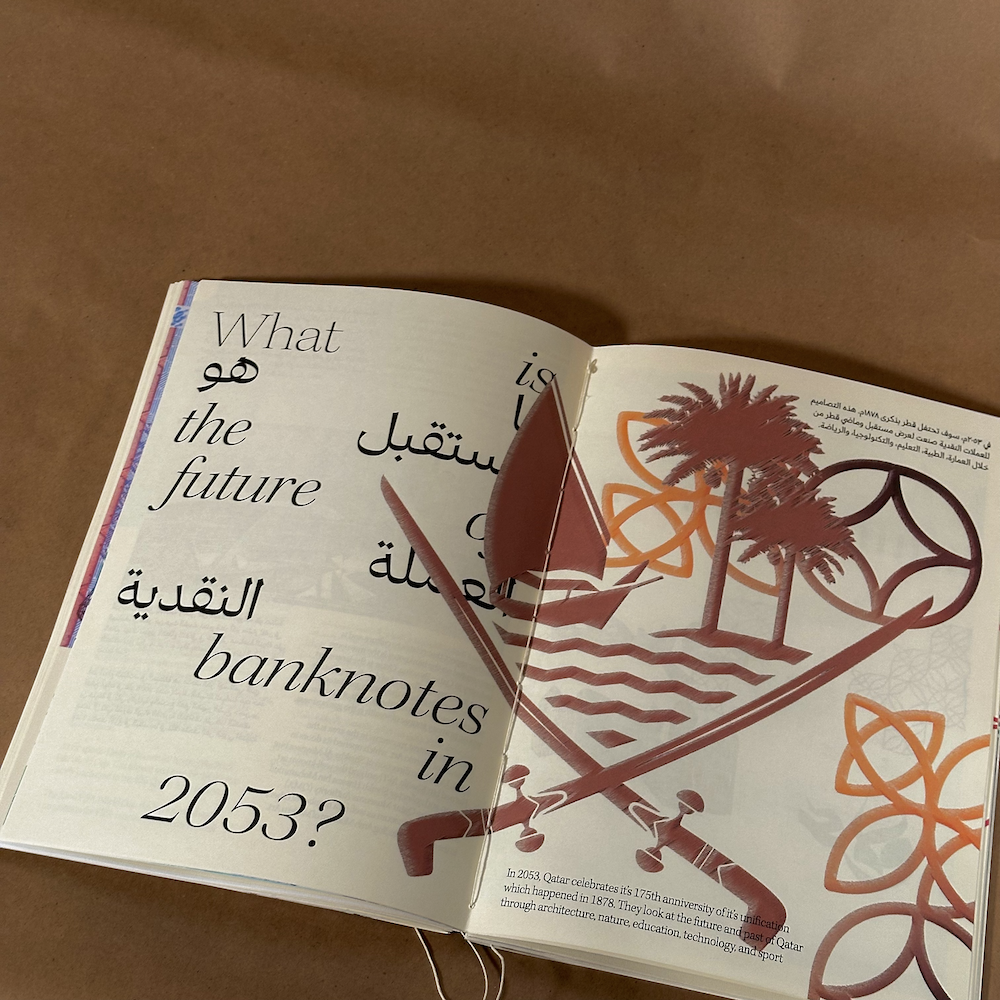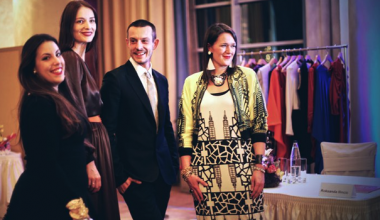In this fast-paced world of headline-grabbing solutions and innovations, it’s hard to find a researcher with the patience, perseverance, empathy, and sensitivity – and some would argue, humility – to explore the past with accuracy, understanding, and a sense of appreciation.
Yet, rare as they are, such researchers exist. Meet Kaltham Essa Al-Fakhroo, a VCUarts Qatar Class of 2024 Graphic Design major. For her final undergraduate project, she chose a subject that not only investigated a hitherto unexplored part of cultural history but also reflected a relationship close to her heart – that with Qatar.

Exploring the currency of culture
Al-Fakhroo chose to investigate the history and significance of Qatar’s banknotes and stamps from the perspective of graphic design – an inspiration born of growing up with a father who meticulously collected and archived items of cultural and historical significance.
The more she researched the topic, the more she realized that hardly anyone had explored the history of Qatar’s currency, before. The discovery that she was venturing into unchartered territory was exciting. It was also “slightly concerning” – she knew she would need to start from scratch in identifying sources of reliable information.
Not that it deterred her. As Al-Fakhroo puts it, “Qatari currency notes, all currency notes for that matter, are national symbols documenting my country’s economic, educational, architectural, sporting, and cultural milestones that took place in the past. Hence, the thrill of researching and revealing the time-specific backgrounds of each new suite of currency outweighed my concerns about starting from scratch.”

Challenges and progress – two sides of the coin
Given the lack of information on the topic, Al-Fakhroo faced challenges from the get-go.
She says, “As expected, when I started out, I hit a wall when it came to finding reliable sources of information and history. In fact, at one point, I didn’t even know where to start or who to start with; just compiling a list of people to interview took weeks, if not months.
“Thankfully my father stepped in to help. Through him, I was able to connect with people in Qatar such as Hussien Rajab, who is the founder of the Qatar Philatelic Centre. Rajab is one of the oldest stamp and coin collectors in Qatar. In Qatar, I spoke to António Geada, a pilot and collector. He provided information regarding the history of postal stamps and banknotes from his collection and his book called ‘Qatar Philatelic History’. I also relied on oral history, on information handed down to them across the generations.”
She adds, “I realized in order to corroborate and consolidate information, I had to connect with people outside of Qatar, especially for the history of currency preceding the 1980s. For this, I contacted the Syrian Design Archive, and Hussien Alazaat, a renowned Jordanian designer who developed the latest edition of Jordanian bank notes.”
She also sifted through and categorized the various fonts, colors, materials, symbols and themes that each edition was based on.
Al Fakhroo explains, “It was interesting to discover the variations in each edition. For instance, in editions printed in the 1970s, they used a font named Riqaa, while the ones issued in 1981 used the Diwani font. It was also interesting to discover the variations in the colors.
“Similarly, I discovered themes as varied as economic imagery and illustrations focusing on Qatar’s educational aspects. Yet, irrespective of these differences, it was beautiful to see how they all, without exception, captured the essence and emotion of Qatar at that specific time.
“Another fascinating aspect was the attention to detail. For instance, in the notes dating to 1981, the designers had included imagery of the Oil industry in the 500 QR note. Likewise, the coins dating to 1973 portrayed Qatari culture through the image of a boat that was also symbolic of the pearl industry.”

“Money can talk – literally”
Al-Fakhroo compiled all her findings – information related to the fonts, designs, materials, colors, themes, visuals related to fiscal and educational topics – into a book titled ‘Behind the Banknote: Decoding Qatari Banknotes Through Visual Exploration’ that she aims to publish in both English and Arabic. The book will also discuss what the next edition of Qatari banknotes could potentially look like.
The young designer says the project turned out to be as much a personal journey as it was an academic one. As she dug through the collections belonging to individuals or official archives, spoke to collectors and specialists, and investigated the history of each edition theme, she couldn’t help feeling grateful for what she was learning.
She says, “As someone born and brought up in a highly digitized lifestyle, it was fascinating to find the common thread that bound me to my forefathers – love and pride for Qatar. It was gratifying to see how, though colors, fonts, themes, and materials may vary, the designs reflected that deep link between my people and my country. I can only imagine the pride each of the previous designers would have felt as they saw the currency they designed in circulation, being passed around among locals and foreign visitors alike.
“Money can talk – literally. It has stories to tell. We just need to slow down and listen to them.”
Words by Mary Joseph
This series is part of an editorial partnership brought to you by VCUarts Qatar and Khaleejesque.







